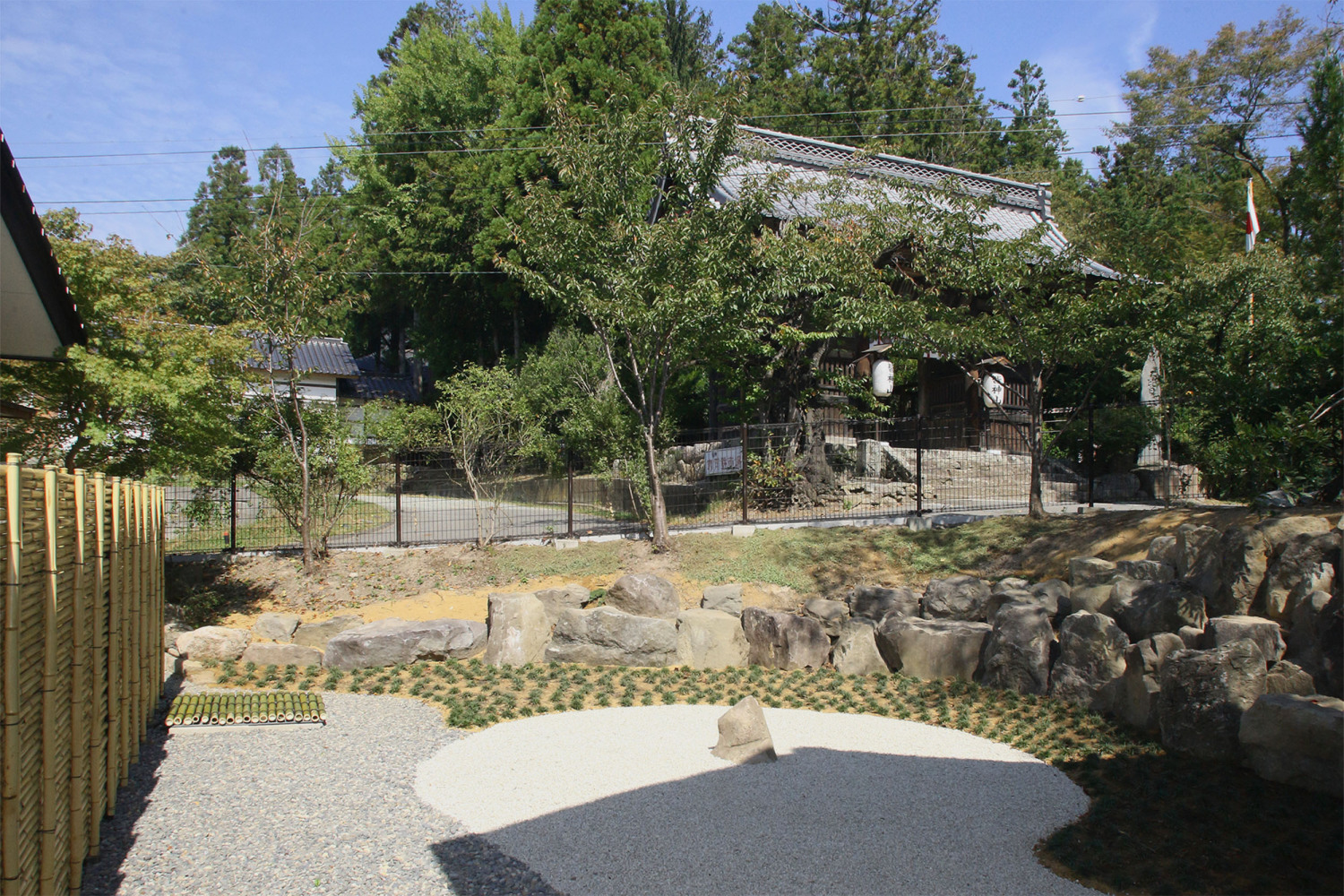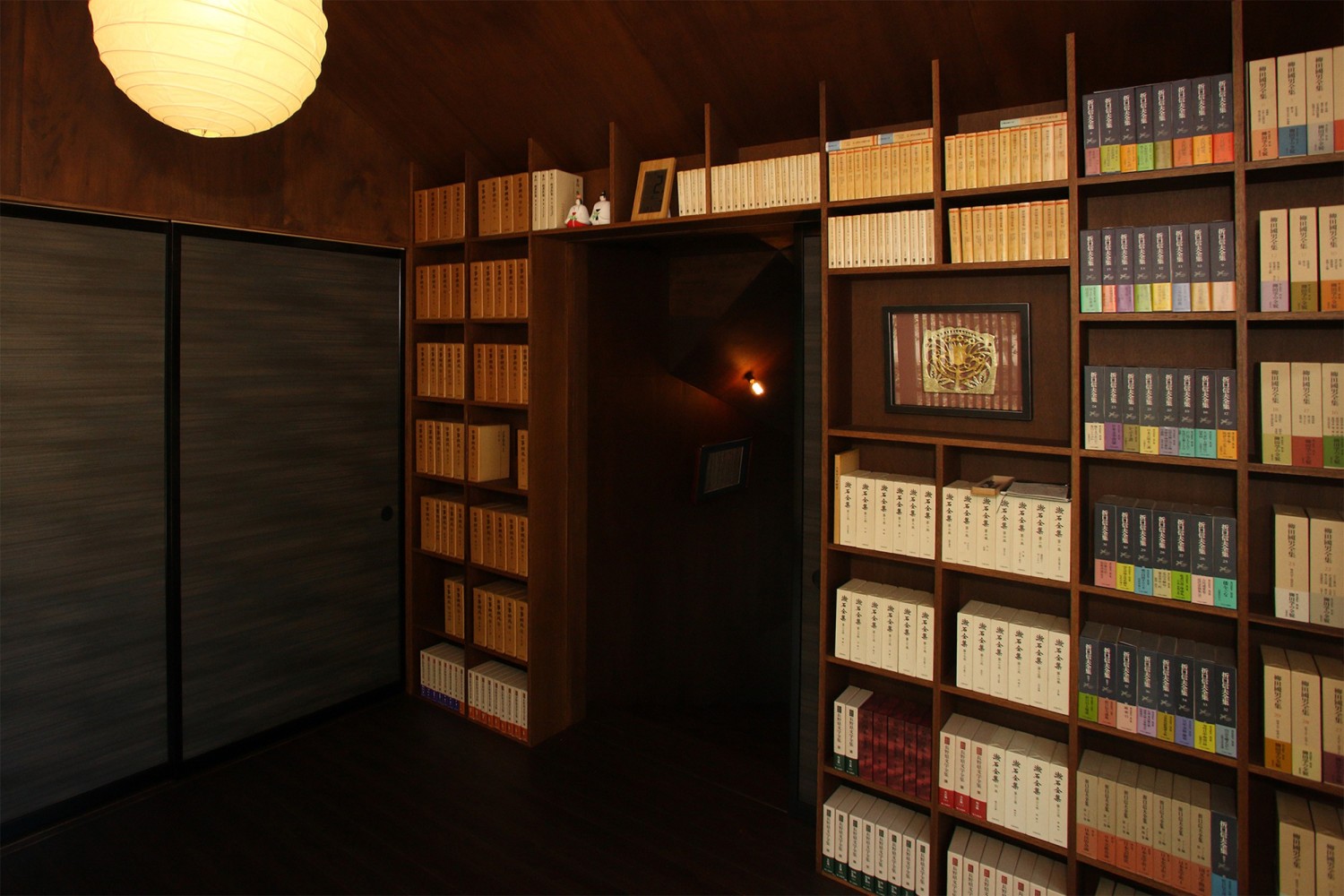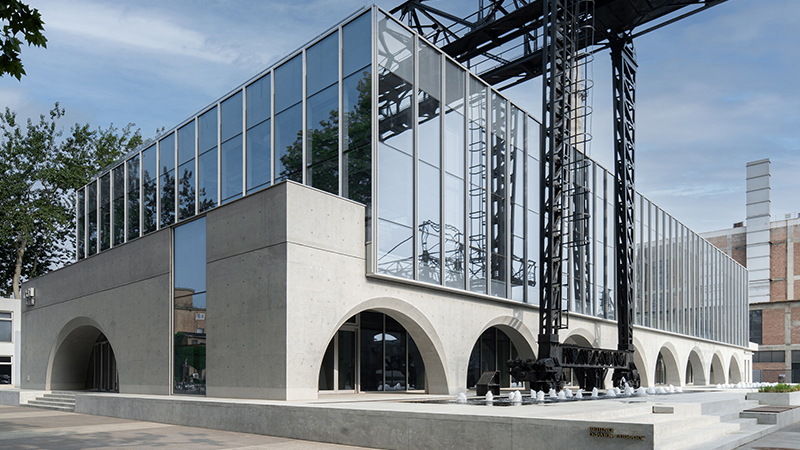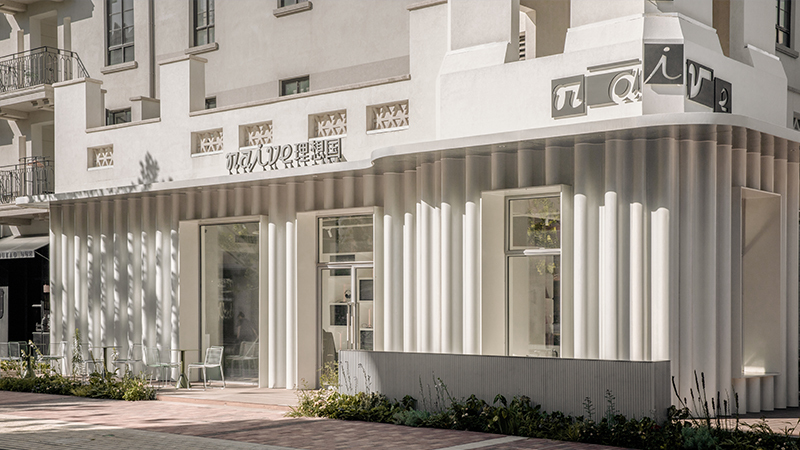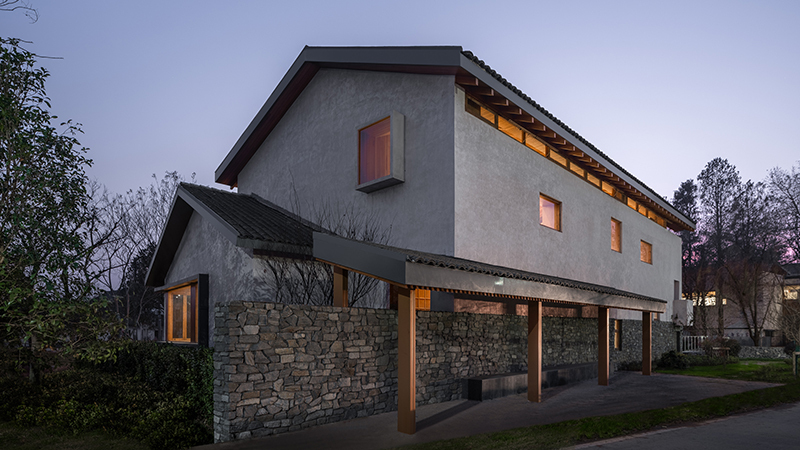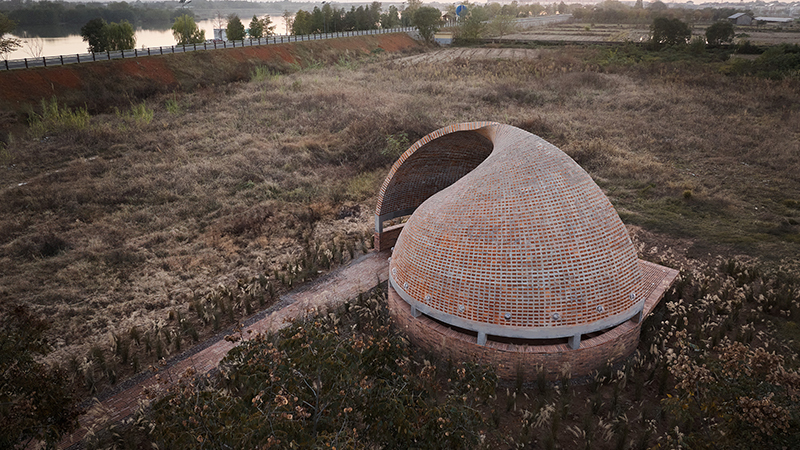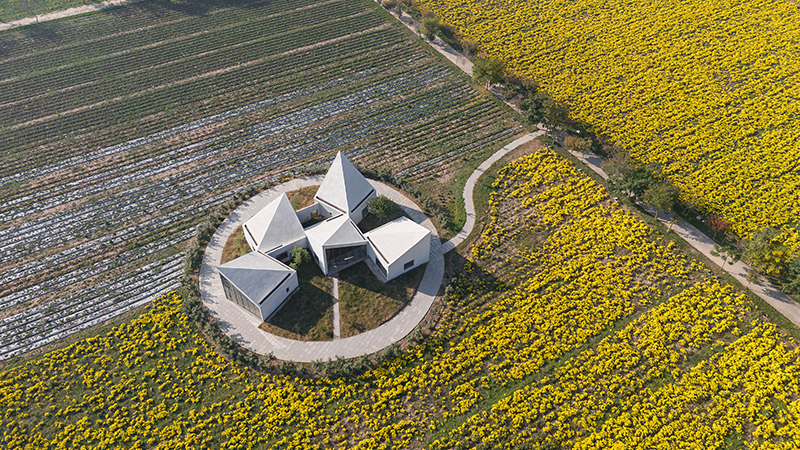| 公司: | 武藤弘树建筑设计事务所 | 类型: | 建筑 |
|---|---|---|---|
| 地区: | 日本 | 标签: | 图书馆 |
这是一个日本神道教牧师夫妇的住房扩建项目,位于日本长野市的农村地区。
This is a housing extension project for the married couple of Japanese shinto priests, located in the rural area in Nagano city, Japan.
场地正对着一个已经成为文化遗产的神社大门,客户要求新建一个主入口,里面有一个小型的接待空间、办公空间、祭祀用具的储存空间,还要一个能容纳他们拥有的近3000本书籍的图书馆空间。他们还希望在建筑旁边增加一个花园,并将其定位为祠堂设施的一部分。此外,该建筑需要解决前街水平与现有住房水平之间最大2170毫米的高差,这个高差过去是通过室外楼梯连接的。
The site is faced with the shrine gate, which is registered as a cultural asset, and the clients required a new main entrance with a small reception space, office space, storage space for ritual utensils, and library space for almost 3,000 books they owned. They also wanted to add a garden next to the building and position them as a part of the shrine facilities. Furthermore, the building needed to solve the gap of maximum 2,170 mm between the front street level and the existing housing level internally, which used to be connected by outdoor stairs.
除了处理这些实际的要求,我们还试图赋予这个小建筑一个概念性的角色,不仅只提供给客户所需的生活空间,而且还要配合业主特殊的职业要求,因为我们觉得这个建筑注定要成为一个普通的生活空间之外的其他东西。
In addition to deal with these practical requests, we tried to give to this small building a conceptual role that supports not clients lifestyle but their existence as priests, since we felt this building was destined to become other than a normal living machine.
在与周围环境相呼应的简约侧檐屋顶下,有一个连续的“管状”空间,被推拉门巧妙地分割开来。全深色的木质表面赋予了空间的抽象性和统一性,多层的推拉门和密密麻麻的书架突出了房间的深度。这个“管子”朝向神社大门,当所有的门都打开时,向外面的游客展示了整个室内的情况,通过在这个深度中展示他们作为祭司的行为,居民将自己与神社的游客(也就是外部世界)联系起来。这种戏剧性的空间特征也象征了神道文化和祭司的职业,其中包括各种风格和复杂的礼仪。
Under the simple side-gable roof responding to the surrounding environment, there is one continuous tube-like room loosely divided by lightweight sliding doors. All-dark-colored wooden surface gives abstractness and unity of the space, and multi-layered sliding doors and densely-designed bookshelves highlight the depth of the room. Having a face toward the shrine gate, this “tube” shows the whole interior to outside visitors when all doors are opened. by showing their behavior as priests in this depth, the inhabitants relate themselves with the shrine visitors (=external world). This theatrical feature represents the culture of shintoism and the profession of priests which consist of the sophistication of styles and postures.
此外,即便是当大门关闭时,窗户也能使周边的人们能够看到庭院花园。这种矛盾点刺激了他们作为牧师的职业人的意识,即所谓的反向戏剧性。换言之,由于庭院花园也是世界的表征,这种与世界或社会同时连接与断开的扭曲状态,向他们自己揭示了他们作为祭司的存在,远不止是通过简单的连接与断开的交替。
Furthermore, the window under the pilotis enables the inhabitants to see the garden even when the door shuts off the view from the outside. This mechanism paradoxically stimulates their consciousness of the professional beings as priests, in a so-called reversed theatricality. In other words, since the stone garden is also the representation of the world, this distorted status of being connected and disconnected simultaneously with the world or society reveals their existence as priests to themselves, much more than just through the simple alternate connections and disconnections.
▼项目平面图 Plan
▼项目剖面图 Section
Project name: Library of Priests (神官图书馆)
Company name: Hiroki Muto & Associates (武藤弘树建筑设计事务所)
Website: www.hiroki-muto.jp
Contact e-mail: office@hiroki-muto.jp
Project location: Nagano, Japan (日本长野市)
Completion Year: 2019
Building area (m²): 65.96 m²
Structural Design: Kishinoue Structural Design Office (岸上结构事务所)
Construction: Sunohara Mokuzai Co.,ltd (春原木业有限公司)
Photo credits: Dataro, Sunohara Mokuzai Co.,ltd, Hiroki Muto & Associates
更新日期:2020-08-20 14:54:31
非常感谢 武藤弘树建筑设计事务所 带来的精彩项目, 查阅更多Appreciations towards Hiroki Muto & Associates for sharing wonderful work on hhlloo. Click to see more works!
